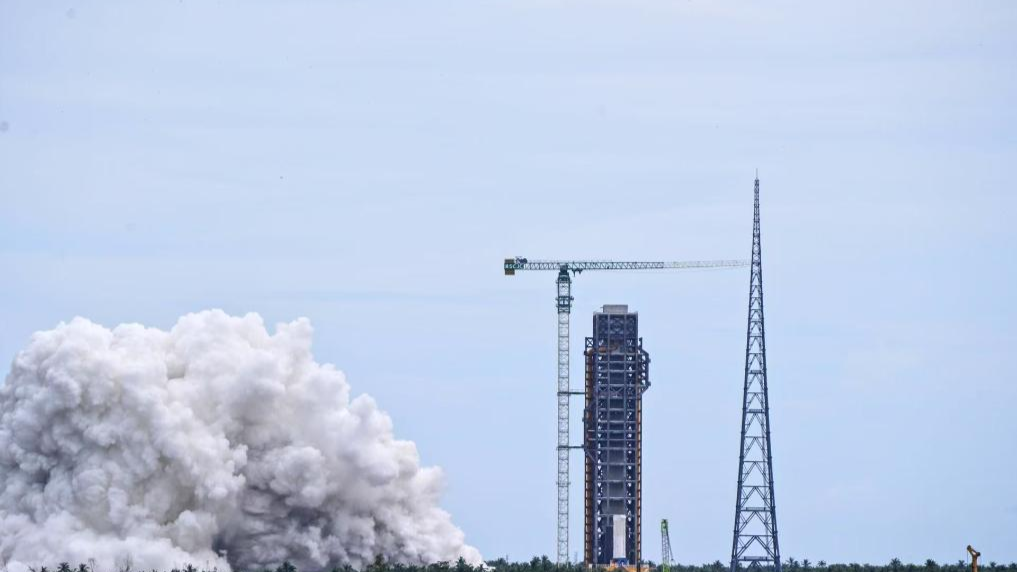
A second ignition test was made on China's next-generation heavy-lift carrier rocket on Friday afternoon as part of efforts to get Chinese astronauts to the moon.
During the propulsion system test that started at 3 pm at the Wenchang Space Launch Center, a coastal spaceport in Hainan province, seven powerful engines, packed inside a prototype of the Long March 10 rocket, were ignited and then burned for about 320 seconds, completing several tasks and generating a great deal of data, according to the China Manned Space Agency (CMSA).
The agency said in a statement that the test was intended to check the comprehensive performance of the engines in low-thrust status and re-ignition processes.
READ MORE: China unveils further details of future manned lunar mission
The first such test took place on Aug 15, with the engines generating a massive combined thrust of nearly 1,000 metric tons, setting a new domestic record for the most powerful engine ignition test.
Developed by China Aerospace Science and Technology Corp, the Long March 10 is a brand-new type of launch vehicle and will be tasked with launching the country's new-generation crewed spacecraft and the lunar landing module.
READ MORE: China launches new satellite for Earth-Moon communications
The rocket is expected to be ready for its maiden flight around 2027.
The moon-mission rocket will consist of a core booster and several side boosters. It will be 92.5 meters tall, roughly the height of a 32-story residential building, and five meters wide. The gigantic vehicle will have a liftoff weight of 2,189 metric tons and a thrust of 2,678 tons.
It will be capable of transporting spacecraft weighing at least 27 tons to an Earth-moon transfer trajectory, according to designers.


